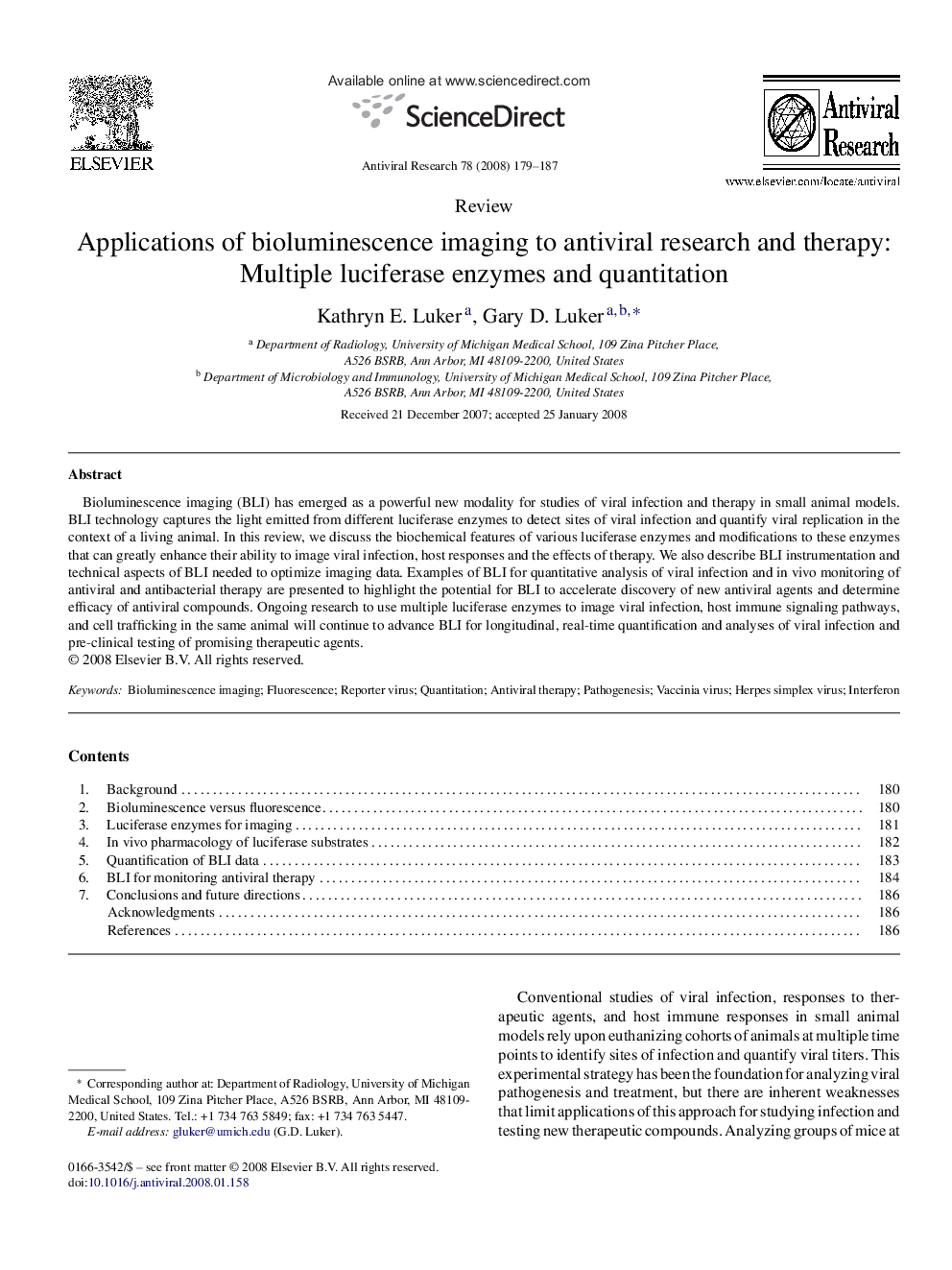| Article ID | Journal | Published Year | Pages | File Type |
|---|---|---|---|---|
| 2511127 | Antiviral Research | 2008 | 9 Pages |
Bioluminescence imaging (BLI) has emerged as a powerful new modality for studies of viral infection and therapy in small animal models. BLI technology captures the light emitted from different luciferase enzymes to detect sites of viral infection and quantify viral replication in the context of a living animal. In this review, we discuss the biochemical features of various luciferase enzymes and modifications to these enzymes that can greatly enhance their ability to image viral infection, host responses and the effects of therapy. We also describe BLI instrumentation and technical aspects of BLI needed to optimize imaging data. Examples of BLI for quantitative analysis of viral infection and in vivo monitoring of antiviral and antibacterial therapy are presented to highlight the potential for BLI to accelerate discovery of new antiviral agents and determine efficacy of antiviral compounds. Ongoing research to use multiple luciferase enzymes to image viral infection, host immune signaling pathways, and cell trafficking in the same animal will continue to advance BLI for longitudinal, real-time quantification and analyses of viral infection and pre-clinical testing of promising therapeutic agents.
